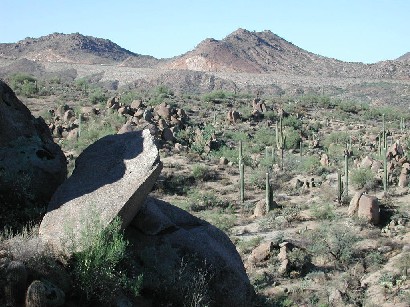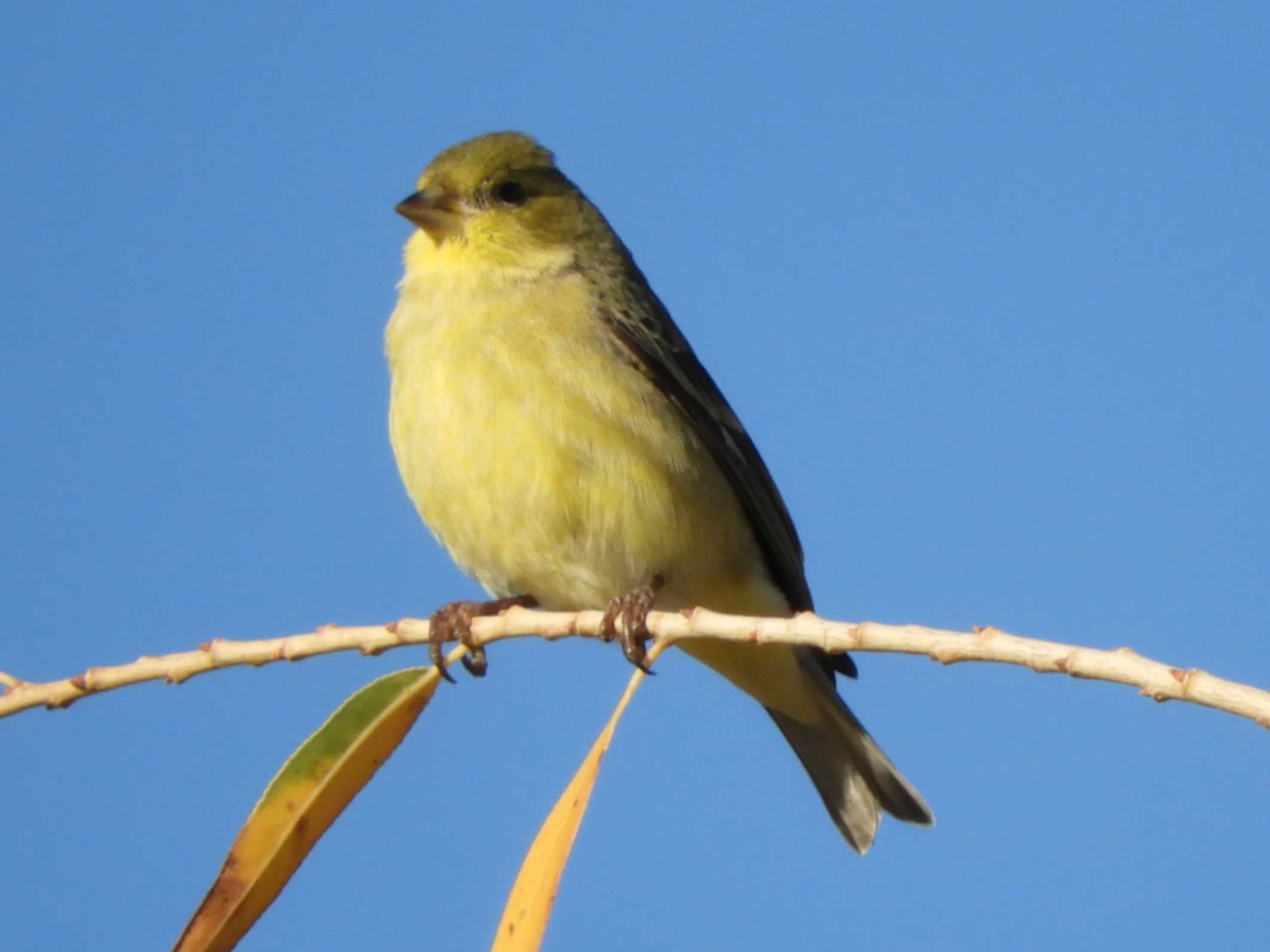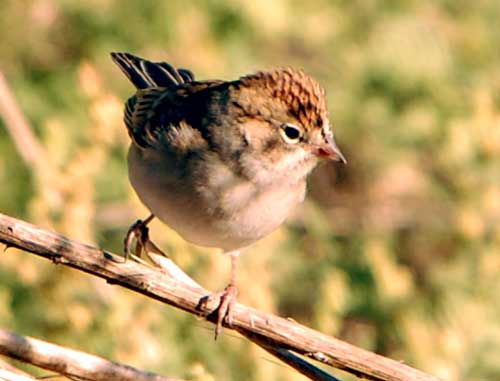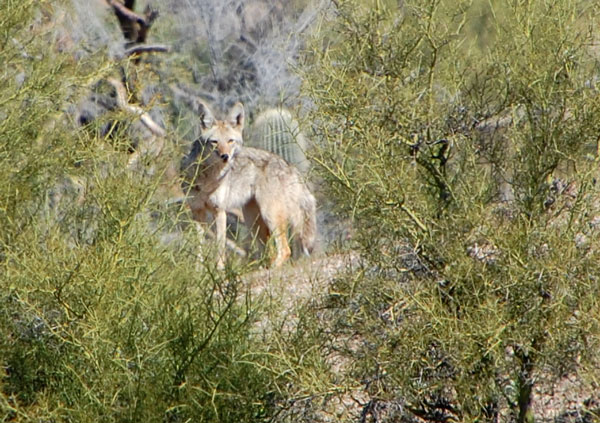Tonto National Forest
2324 E. McDowell Road
Phoenix, Arizona 85006
View a Slide Show of Mesquite Wash at Flickr.

A view to the west at Mesquite Wash.
The road cut is the Bee Line Hwy., SR 87.
Mesquite Wash is a rare desert riparian habitat located approximately 20 miles northeast of Fountain Hills, Arizona. Follow the Bee Line Highway, SR 87, a few miles past the Four Peaks turn off, watching for the Mesquite Wash sign. The main wet areas are on the west side of the highway where there is a large dirt parking area. A spring and a 1/2 km long stretch of permanent water lie a short distance down the sandy 4x4 roads leading from the parking area. Tremendous biodiversity in terms of plants, birds, butterflies and aquatic life is easily observed here.
Although these roads are somewhat passable, I recommend walking in. Environmental damage in this area is severe ... the large shade trees and broad sandy washes attract many recreationists many of whom behave irresponsibly. Rubbish, human waste, spent ammunition, spilled motor fuels and lubricants, and numerous eroded ORV trails ... but don't let these hazards and eyesores stop your visit. There are so many fascinating natural observations that can be made here. And when your visit is complete, please write a note to the Forest Service:
|
View a Slide Show of Mesquite Wash at Flickr. |

A view to the west at Mesquite Wash. |
Thank you! The forest service and off road vehicle users groups have responded by erecting signs and barriers to keep vehicles out of the most sensitive area. Some sensitive areas are left out, however, and a few riders view the signs and barriers as an affront to their imagined rights and ride around them straight into the spring area. More policing might be necessary. In addition there are two watersheds, Rock Creek and Mesquite Wash, that extend well up into the foothills of Four Peaks on the east side of the road. These are reachable via high-clearance vehicle road -- or better yet hike up the dry wash beds. They are easy to hike for the first few kilometers and offer many interesting things to see. The lower portion of Rock Creek includes a dense mesquite bosque that includes a variety of other trees such as Texas Mulberry. The creek and bosque are vital stopping points for migrating neotropical birds. The Mesquite Wash area also includes deep sandy washes, wash banks, rocky hillsides/bajadas and tallus slopes each with different sets of plants and animals. |
View Mesquite Wash in a larger map. The shaded area represent the area designated as Mesquite Wash in this guide. |
BirdsThis is a long list because Mesquite Wash is a riparian habitat. Birds likely to be seen with more common birds at top:
|

A female Lesser Goldfinch, Carduelis psaltria. 
Brewer's Sparrow, Spizella breweri.
|
Mammals
|

|
Plant ListUpper Sonoran Desert Scrub interspersed with chaparral and well developed riparian habitats and moist springs results in a very diverse mosaic of plant species.
Flora List as Print-Friendly Word Document |
Desert HoneysuckleMilkweed VineCanyon RagweedNew Mexico ThistleCamphor WeedTrixisWire LettuceArizona AlderOrange FiddleneckWright's ThelypodyClammy WeedCentauryTexas BetonyArizona WalnutDevil's ClawCatclaw AcaciaVelvet MesquiteFalse IndigoScarlet SpiderlingCreamcupsCalifornia PoppyRabbitfoot GrassGolden LinanthusCaniegreScarlet PimpernelLesser Indian PaintbrushSnapdragon BushDowny MonkeyflowerNightshadeSeaside PetuniaDesert TobaccoDesert HackberryCreosote Bush |
SkunkbushCockleburTriangle-leaf BursageSeep BaccharisBrittlebushTurpentine BushPaper FlowerDesert WillowWingnut CryptanthaDesert SennaFoothills Palo VerdeDwarf Morning-gloryWhite RatanyHorehoundFairy DusterChiaWait-a-minute BushTrailing Four O'ClockBigelow's Four O'ClockHooker's Evening PrimroseDevil's ClawPrickly PoppyArizona SycamoreYellowthroat GiliaFlat-topped BuckwheatYellow ColumbineGraythornButtonbushCardinal Monkey FlowerSeep Monkey FlowerWater SpeedwellSouthern CattailDesert Mistletoe |
Sonoran Desert Naturalist Home
Page
Desert Places
Field Guide